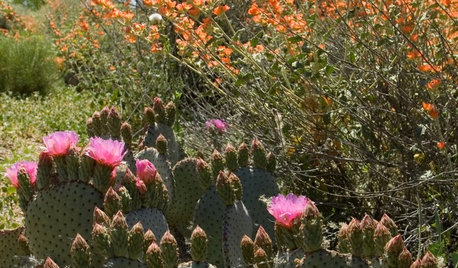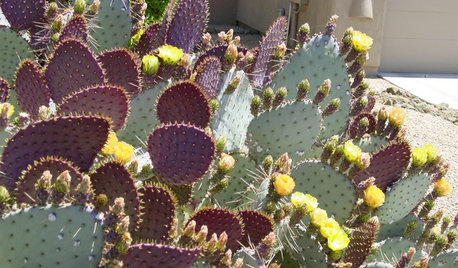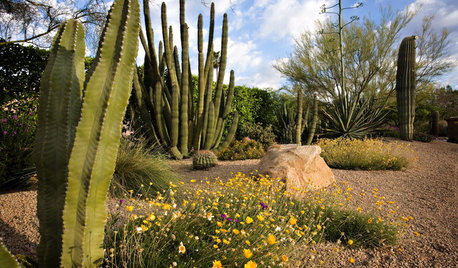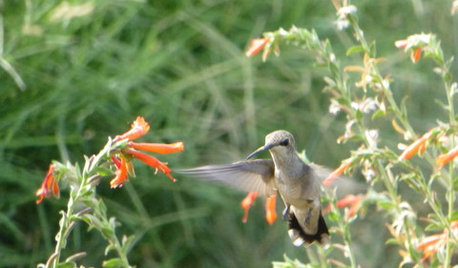Deformed pears, cause?
mulberryknob
10 years ago
Related Stories

GARDENING GUIDESGreat Design Plant: Beavertail Prickly Pear Wows With Color
The dazzling magenta flowers of this cactus will snag your heart — just beware the bristles that can stick in your skin
Full Story
GARDENING GUIDESGreat Design Plant: Santa Rita Prickly Pear for Purple Appeal
Distinctive colored pads and yellow flowers make this cactus a favorite in Southwestern gardens
Full Story
EDIBLE GARDENSWhy Grow Quince? For Beauty, Fragrance and Old-Time Flavor
Delightfully perfumed fruit and lovely spring blossoms make this apple and pear cousin worth a spot in the garden
Full Story
EDIBLE GARDENSA Formerly Weedy Lot Now Brims With Edibles and Honeybees
Photographers transform their barren backyard into an oasis filled with fruit, vegetables, honey, eggs and more
Full Story
SOUTHWEST GARDENINGTall Cactuses Bring Drama to Southwestern Gardens
See how 5 columnar cactuses add a striking design element to warm-weather gardens, courtyards and entries
Full Story
GARDENING GUIDESSweet Serendipity: Opening to Happy Garden Discoveries
Unplanned nature scenes can be unbelievably beautiful; you just need to know how to look
Full Story
GARDENING GUIDES6 Native Ground Covers for Tough, Dry Spots
Sun beating down on your sandy gravel? Thick shade darkening your clay soil? There’s a ground cover here for you
Full Story
FALL GARDENING11 Trees for Brilliant Fall Color
Give your landscape the quintessential look of autumn with the red, orange and yellow leaves of these standouts
Full Story
CONCRETEWhy Concrete Wants to Crack
We look at the reasons concrete has a tendency to crack — and what you can do to help control it
Full Story
LANDSCAPE DESIGN7 Great Trees for Summer Shade and Fall Color
These landscape-pro faves straddle the seasons beautifully. Could one enhance your own yard?
Full Story






Konrad___far_north
lucky_p
Related Professionals
Maple Valley Landscape Architects & Landscape Designers · Foothill Ranch Landscape Architects & Landscape Designers · Owings Mills Landscape Architects & Landscape Designers · Concord Landscape Contractors · Bridgeview Landscape Contractors · Broadlands Landscape Contractors · Canby Landscape Contractors · Cockeysville Landscape Contractors · Dedham Landscape Contractors · Dudley Landscape Contractors · Fort Myers Landscape Contractors · Peoria Landscape Contractors · Richmond Landscape Contractors · Rio Linda Landscape Contractors · Sammamish Landscape Contractorsjean001a
Konrad___far_north
alan haigh
alan haigh
jean001a
Konrad___far_north
jean001a
Charlie
bob_z6
alan haigh
Fascist_Nation
bob_z6
jean001a
mulberryknobOriginal Author
jean001a
alan haigh
Konrad___far_north
plumhillfarm
mulberryknobOriginal Author
jean001a
plumhillfarm
bob_z6
mamuang_gw
Jordan Lewis